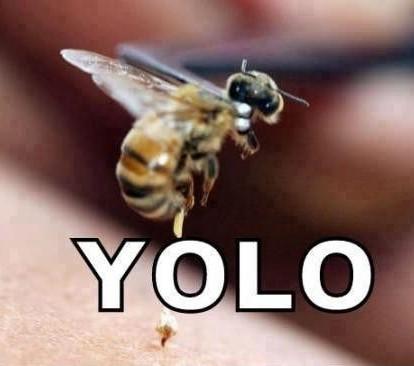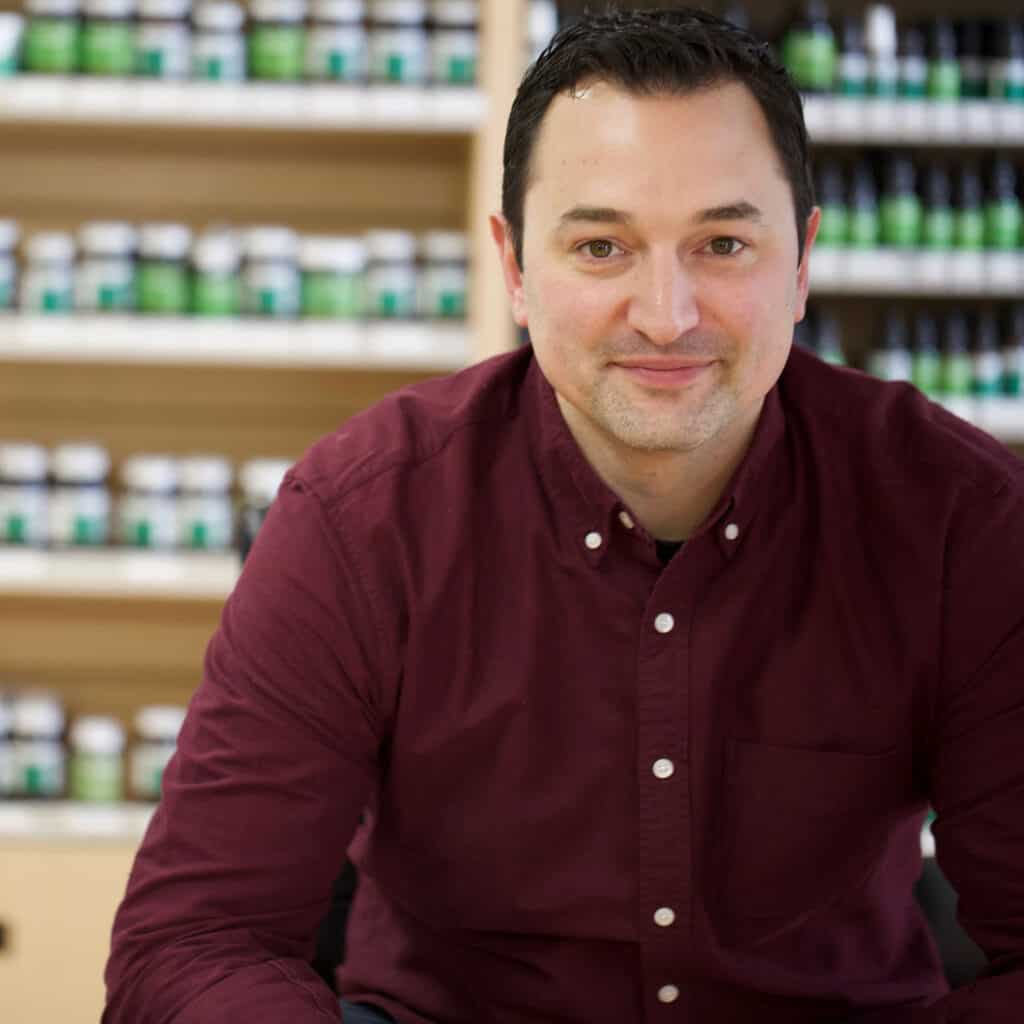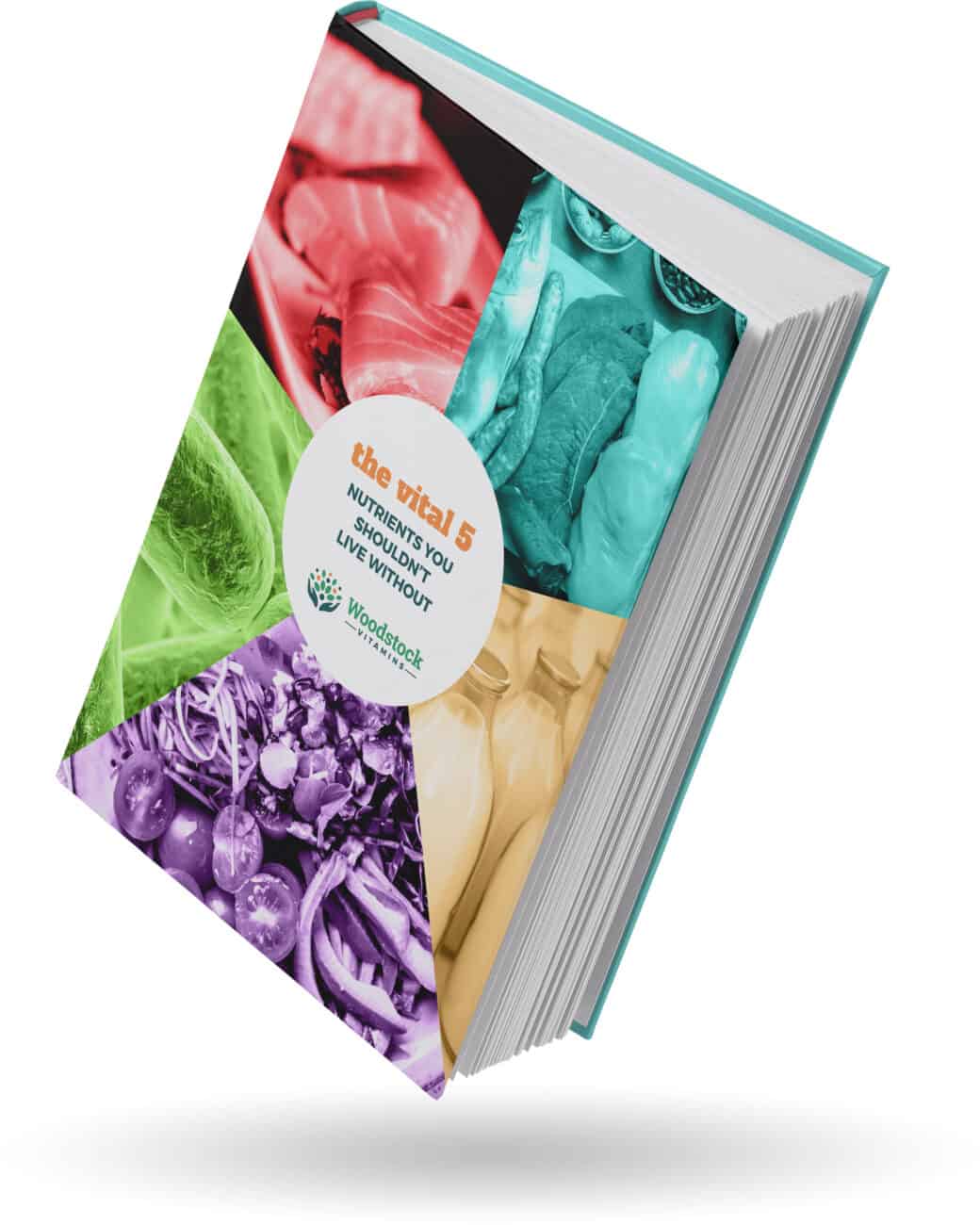Since we have so much free time on our hands with the current COVID pandemic, I’ve got an idea: let’s all bake bread and then kick some wasp nests around and see how fast we can run after filling up on carbs and butter! Maybe we can throw some of our hoarded toilet paper at bees nests like a sick game of cornhole.
Did that first paragraph sting? It’s supposed to. I’m presenting the No BS Guide to Stings. We’ll talk about preventing bee, hornet, and wasp stings using both conventional and natural options. We’ll talk about what you should be doing immediately after a sting, and how to handle the 3-5 days after a sting that can tend to still be a miserable time.
I want to answer the following two questions:
- What’s better, natural, or conventional sting treatment products?
- What folk remedies for bee, wasp, or hornet stings actually work?
Dispersed throughout will be emotional stings. We need to toughen your skin up, ya big stinking loser! Just kidding… you’re great. I do think the play on words is funny so I’ll be doing bits this whole blog. Be prepared for lots of stings…
The Big Warning
Bees, hornets, and wasps belong to a category of insects called “jerks with wings.” It’s a very technical, official classification.
These guys sting us which causes lasting pain and swelling. Or, they make us flail about like an uncoordinated elementary school ballet dancer. And that stings our pride.
It’s not them; I blame us. We’ve got some nerve! We hang out in a bee, wasp, or hornet’s neighborhood, smelling all sweet and get super angry when they want to hang out.
Unfortunately, some of us react strongly to the venom of these knuckleheads and therefore require immediate medical assistance.
Don’t take nettles if you have an Epi-Pen. Call an ambulance if you get stung and have difficulty breathing, use a prescribed Epi-Pen, or have any general severe reaction to a sting. This is no time to play around with a mustard poultice.
If your feelings get hurt reading some of the non-insect stings in this article, it’s because you’re a snowflake. You should call a wambulance.
Preventing Bee Stings
A section on preventing bee stings is silly, but it’s needed for completeness. I’m going to offer half-serious advice:
- Don’t go near wasp, bee, or hornets
- If you see a bee, wasp, or hornet, you are free to stand your ground. Pull your registered firearm of choice and show him you’re an American and won’t take no guff.
- Don’t look like a flower. This is probably the only serious one, gang. Bright colors and floral scents can attract bees, wasps, or hornets. Tone it down with the pastels or just roll with jungle camo.
- Actually, if you have a flowery personality, just stop with that too. I mean, we need more of it on social media since the election is coming up, but we’re all miserable and appreciate it if you just tone it down a bit.
- In fact, stay inside. It’s hot anyway.
- OK one more serious one: Be careful where you step. Near swimming holes, on trails, in your garden, out in the woods, under furniture, or in crevices of buildings are excellent real estate for bees, hornets, and wasps.
Managing Bee, Hornet, and Wasp Stings Effectively
To most effectively manage a sting, we have to know what we’re up against.
The bee, wasp, or hornet will inject us with some venom. This causes pain, inflammation, swelling, and itching due to the venom and local histamine release. Sometimes the stinger can remain in the skin and that must be addressed. Finally, the area can become infected, especially if we’re digging at an uncovered bite.
The strategy for dealing with a sting is the same whether we choose more ‘natural’ options or conventional treatments.
Five Steps for Managing a Fresh Sting
- Check for the stinger and remove it if necessary
- Clean the area with soap and water
- Take a potent dose of a pain reliever, preferably one with some anti-inflammatory properties
- Take a potent dose of an antihistamine to blunt the swelling response
- Apply ice to the area for 10 minutes on, 10 minutes off rotations
Most people will rush to their tweezer supply to get that pesky stinger out. This is a bad idea! Squeezing the stinger will drip out last bits of venom and potentially make your problem worse.
Instead, milk the stinger out like you’re emptying your toothpaste container because you’re stingy (oooh feel the sting!). Squeeze the nearby area and push towards the stinger.
In the immediate aftermath of a sting, it’s important to act quickly and deliberately. Higher dose, more potent, and oral treatments will be the best to stop the pain and swelling.
Repeat doses that are more potent may be wise for the first 24 hours. After that, we can move to a maintenance mode and even use some topical therapies.
The choice of natural or conventional options is entirely up to you. I’ll cover both options and then make my recommendation at the end.
Managing Bee, Hornet, and Wasp Stings Naturally
Natural or alternative sting treatment options should be separated into two bins: stuff that works well and stuff that doesn’t work so well and probably should be stopped.
Here’s the advice that I give my patients in-store at our pharmacy in Woodstock, NY.
Dr. Neal’s Natural Sting Treatment Regimen
Turmeric VMAX for pain and inflammation supportREAL turmeric, not the adulterated stuff that uses black pepper, can be a powerful pain supporting optionImmediately following a sting: 2 capsules, then wait 8-12 hours for an additional 1 capsule (max of 3 caps in 24 hoursMaintenance: 1 capsule two to three times daily,
- Nettles or Allergy Support for allergy and histamine system support
- Nettles or Allergy Support (our combination nettles, quercetin, and other ingredients for inflammation) are a good alternative to those wary of potent, sedating antihistamines
- Immediately following a sting: 1 capsule, then 1 more capsule before bed
- Maintenance: 1 capsule twice daily
Comfrey, Arnica, and Calendula cream for topical relief
- Comfrey and especially calendula can be VERY soothing to a sting
- Wait 4 hours after the sting, then apply a chocolate chip size to the area after each icing, then up to 4 times a day
There are a number of folk remedies that we should be aware of. Some work, some don’t. Here’s the lightning list and my thoughts on them:
- Essential oils, in particular, lavender: probably will work well, but remember all essential oils must be diluted as caustic oils will make your local pain much worse
- Apple cider vinegar: people want to use this to neutralize the sting. Can we just stop it with ACV? Neutralization, in general, isn’t a thing; most of the venom is injected and is far deeper than superficial neutralizing agents could touch
- Baking soda: another neutralizing agent with questionable efficacy that some people swear by.
- Honey: has wound healing properties, but may not be beneficial for the sting
- Aloe: best for burns. If you want to try it, just get REAL aloe (the brown stuff)
- Ammonia: This advice is courtesy of a blog reader and upstanding, longstanding Woodstock patient LG.
- Applied to the site, ammonia stops the itch and the pain within minutes. I have used this many many times.
- There’s a cute product called Afterbite which gives you about 2 cents’ worth of ammonia in a tube with an applicator for four bucks. I buy them anyway, but when I’m home I use a cotton ball and ammonia. Works just as well.
Now, bear in mind that if some old-fashioned remedy works well for you, keep doing it! If you’re a newbie to some of these options, go for things like aloe, ammonia, or diluted lavender essential oils.
Managing Bee, Hornet, and Wasp Stings with OTC Medicine
Some people want cheap, powerful, and easy. That’s where conventional over-the-counter medicine comes in.
Dr. Neal’s Conventional Sting Treatment Regimen
- Ibuprofen 200mg tablets for pain and inflammation
- Immediately following a sting: 2-4 tablets (400-800mg) by mouth once, then repeat every 4 hours as needed
- Alternatively, acetaminophen could be used at 500-1000mg up to four times a day
- A potent antihistamine for swelling and itching
- Don’t mind drowsiness?
- Benadryl (diphenhydramine) 25 mg capsule or tablet
- Immediately following a sting: 1-2 capsules or tablets (25-50mg) by mouth once, then 25mg as needed every 4 hours after
- Want something powerful but don’t want to get drowsy?
- Chlorpheniramine 4mg tablets
- Immediately following a sting: 1 tablet (4mg) once, then ½ tablet every 4 hours after that
- Don’t mind drowsiness?
- Hydrocortisone 1% cream for itch
- Start applying this in small amounts up to 3 times a day, typically after icing
- After Bite for pain and itch, as Mr. LG said above
Check with your doctor or pharmacist before using these options to make sure they’re good for YOU.
Antihistamine choice is the only question mark here. Early on, you probably want big relief, but it comes at the cost of drowsiness. Chlorpheniramine is a good alternative because it’s potent but won’t put you into nappy time until Thanksgiving.
Some people ask if Claritin, Zyrtec, or Allegra are good options. They aren’t for acute reactions like bee stings. They are less potent and take a longer time to build up in the system. If you currently use those products and need an emergency dose of something like Benadryl, then most docs will tell you it’s OK to do both for a short period (1-3 days).
There are a number of conventional remedies people use but don’t really work. Here’s the lightning list and my thoughts on them:
- Calamine lotion: this doesn’t really help with the itch and is best for weeping rashes like poison ivy
- Benadryl cream: this doesn’t really penetrate deep enough to benefit the swelling or itch
“Tell Me Exactly What To Do If I Get Stung!”
Ok, ok, here’s the short and sweet version:
- Clean the area with soap and water
- Remove the stinger, but don’t pull and squeeze. Milk that stinger out
- Take a dose of 1-2 capsules of Turmeric VMAX (or ibuprofen 200-400mg)
- Take a dose of 1 capsule of Nettles (or Benadryl 25-50mg if you really want to wack it down)
- Apply ice to the area for 10 minutes on and 10 minutes off for 3-4 cycles
Then, follow these recommendations for the next couple of days:
- Use ice regularly as needed
- Take Turmeric VMAX, 1 capsule 2-3 times a day
- Take Nettles, 1 capsule twice daily
- Apply Comfrey, Arnica, and Calendula salve up to 4 times daily (after icing)
The direction you take is up to you. My vote is for the more potent, conventional OTC medicine on day 1, then switching to supplement options thereafter. You’ll get the most impact and quickest result that way.
And before you know it, you’ll be back to new with a fun story to bore your friends with (OOOH, STING!).
Leave the Bees Alone!
Here’s some classic advice: if you want to play around with a hornet’s nest, just go on Facebook and say something political. Stay far away from bees, wasps, and hornets otherwise, and you’ll never have to worry about stings.
In general, treatment of bee stings and the like is simple: address the pain, swelling, and itching with your therapies of choice.
There are strong, inexpensive, and safe conventional options. There are not-as-strong-but-potent-enough ‘natural’ options, but they tend to be a bit more expensive.
Either way, act quickly and consistently to resolve an insect sting with minimal suffering. For the emotional stings, I suggest giving Dr. Dresdale a listen, because I’m obviously too immature to handle my emotions.

Just trying to keep it real…

Neal Smoller, PharmD
Owner, Pharmacist, Big Mouth



